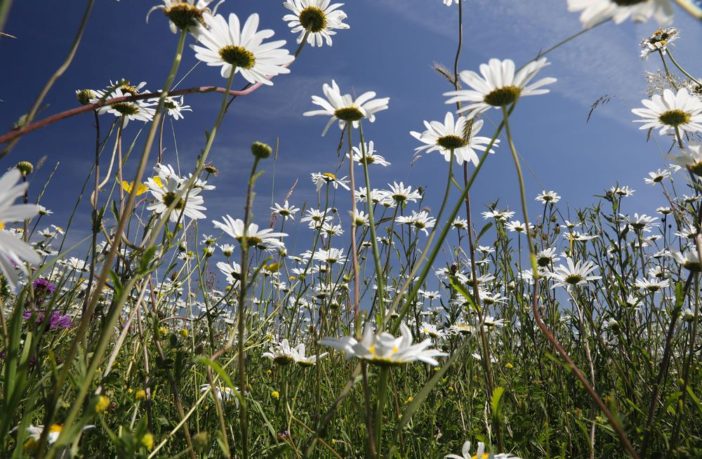On the eve of National Meadows Day, David Gowing, Professor of Botany at The Open University, explains why floodplain meadows are important and not just a thing of beauty.
Floodplain meadows are the kind of places you visit to reflect, reminisce and become inspired. They blossom in April, May and June and come alive with wildlife and plants, creating an ever-changing kaleidoscope of colour.
Not only scenic, but they support a more natural approach to agriculture. Steeped in history, stretching back a thousand years, floodplain meadows once formed the backbone of the rural economy in England and are therefore rich in cultural and social heritage.
The floodplain meadow lifecycle
In late June or early July, floodplain meadows are cut, whilst in their prime, seemingly a devastating loss. However they are cut back for a reason, to make hay. The hay cut is essential to maintain the meadows’ diversity. The meadows quickly bounce back from the cut, much like your garden lawn. They produce flowers again, extending the season for vital pollinators. The harvest provides hay for animals to eat over winter, enabling production of ‘grass fed beef.’ Cows graze the re-growth and later they eat the dried hay through the winter. A much more sustainable food system than feeding cattle imported grains or home-grown maize, produced at great cost to the environment.
Yet, these meadows are now very rare, lost to the great drive for post-war efficiency. They have been sprayed with selective herbicides to produce pure grass, drained for conversion to arable fields or excavated for the gravel lying beneath them. Seventy per cent of England’s floodplains are now either ploughed fields or grassland with no flowers, offering little wildlife interest and damaging the local environment. A ploughed floodplain pollutes the river with eroded soil and agrochemicals (pesticides and fertilisers).
We now know that these meadows can capture large amounts of carbon in their deep undisturbed soils. They trap nutrient-rich sediments from their rivers during floods and convert it into a hay crop, which is then taken out of the floodplain. As a result, they both clean up the rivers and create space for floodwaters to expand.
A more natural way…
Floodplain meadows are a perfect climate solution, producing sustainable climate-friendly meat. They are a system that will recover after floods and are resilient to drought, a fine example of production working with nature and giving something back to nature, instead of fighting against it. Furthermore, floodplain meadows are one of the UK’s most botanically rich habitats.
As we seek to allow floodplains to operate naturally, it is not just the beavers and the trees that will do the work, meadows play a role too, facilitating a gentle return to producing food from a landscape in transition and keeping people connected to the land.
We therefore need to cherish and restore floodplains to their former glory, so we can move towards a food system that is in tune with nature and kinder to the planet.



